We met in a parking lot near downtown Honolulu and set off in a bus to learn from representatives of the Kamehameha Schools, which for 125 years have been working “to enhance the capability and well-being of Native Hawaiians through education.” Our ensuing experiences at Paepae o He’eia and Papahana Kuaola helped to elevate the second annual Hawaii Food & Wine Festival from less holistic culinary events that focus primarily on consumption. As our guide said, the Kamehameha Schools mission involves perpetuating “natural and coastal stewardship,” water resources, sustainable food systems and renewable energy sources (wind, solar and hydro). After all, if the people of Oahu were forced to stop importing food, they’d only have a two-week supply.
The traditional 88-acre pond traps ocean fish in fresh water until they grow large enough. There’s a breach in the wall, but Keli’i Kotubetey and Hi`ilei Kawelo have been able to farm since 2001.
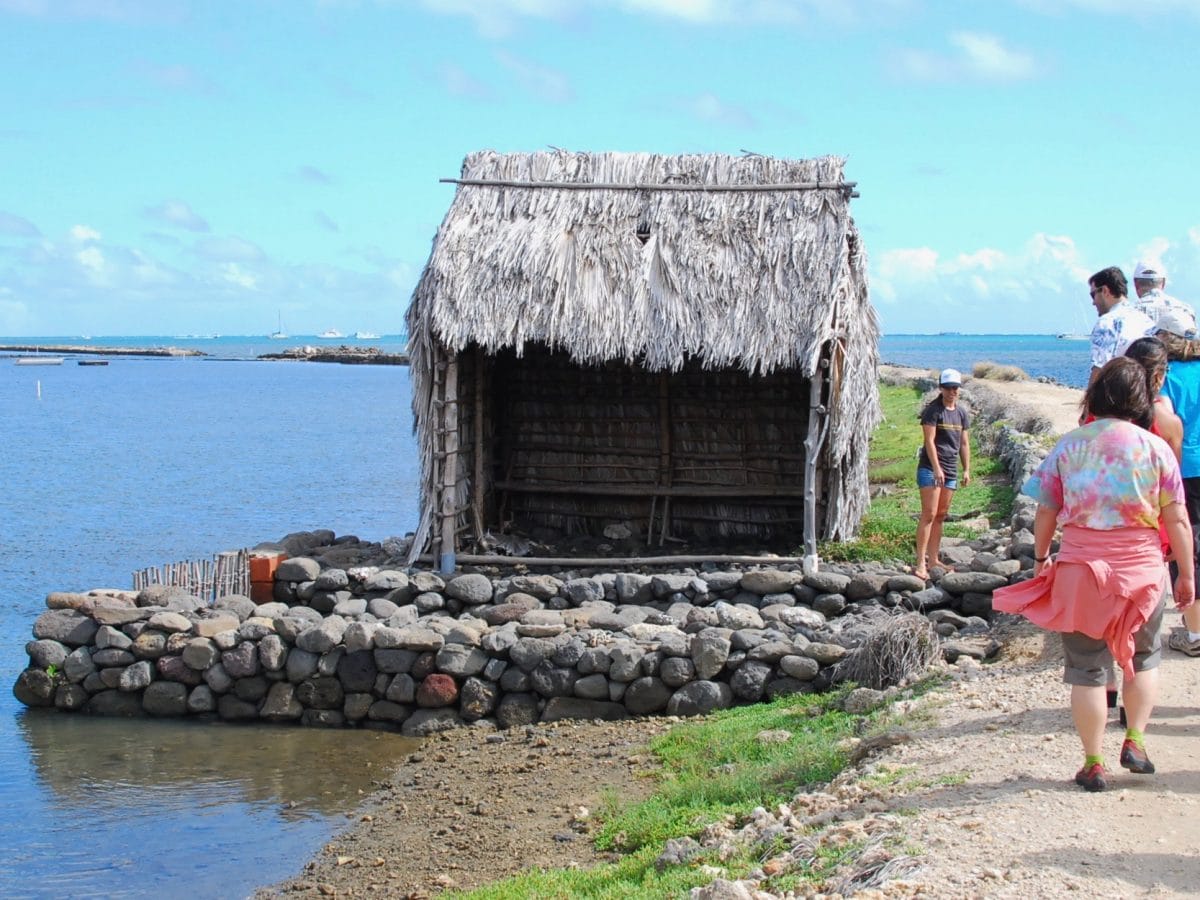
A traditional security hut remains, because in the past, fish were so abundant that people could reach into the water and pull one out with their bare hands. These days, they guard against barracudas and big Samoan crabs.

To get a feel for what happens at Paepae o He’eia, we each scaled and cleaned silver-skinned moi with seashells.
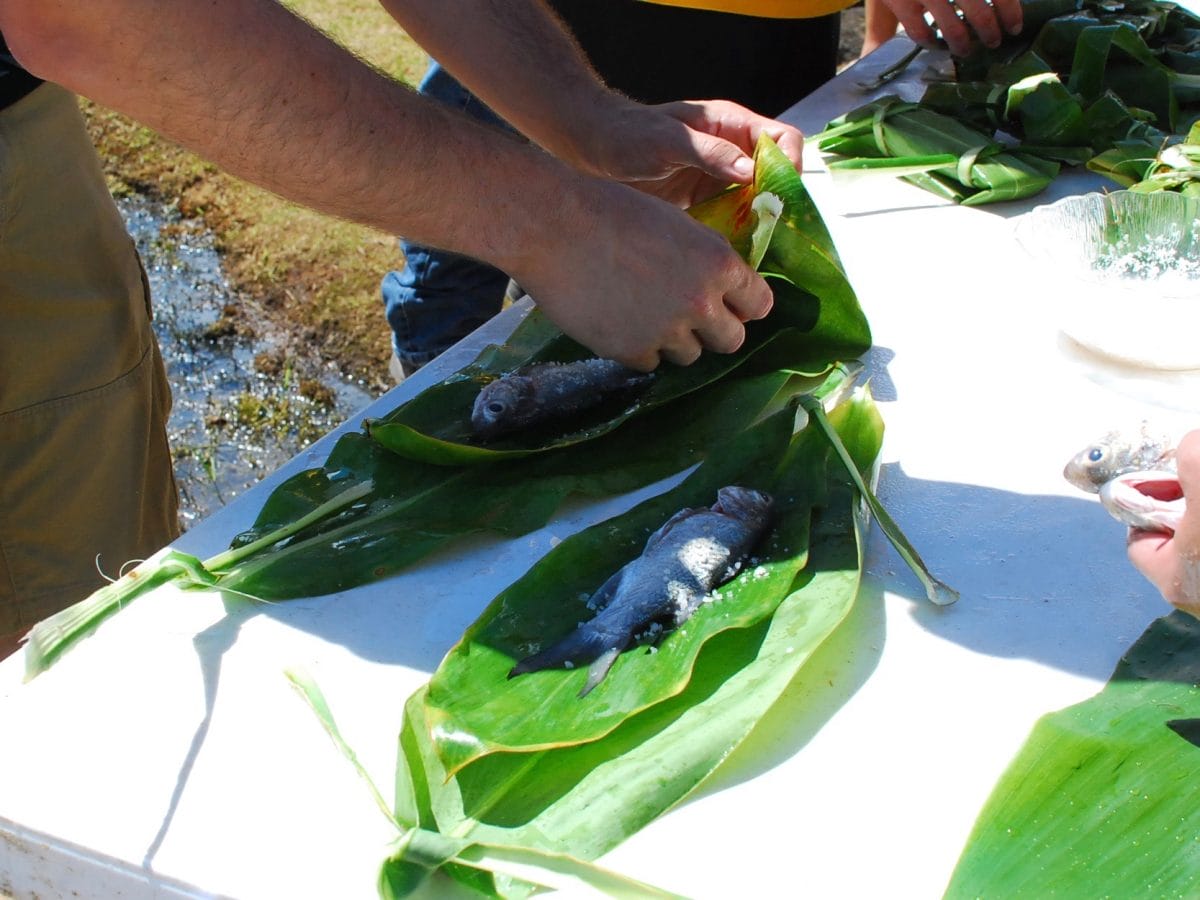
We wrapped the moi with tea leaves and twine.

The moi became bundles, to be steamed for lunch.
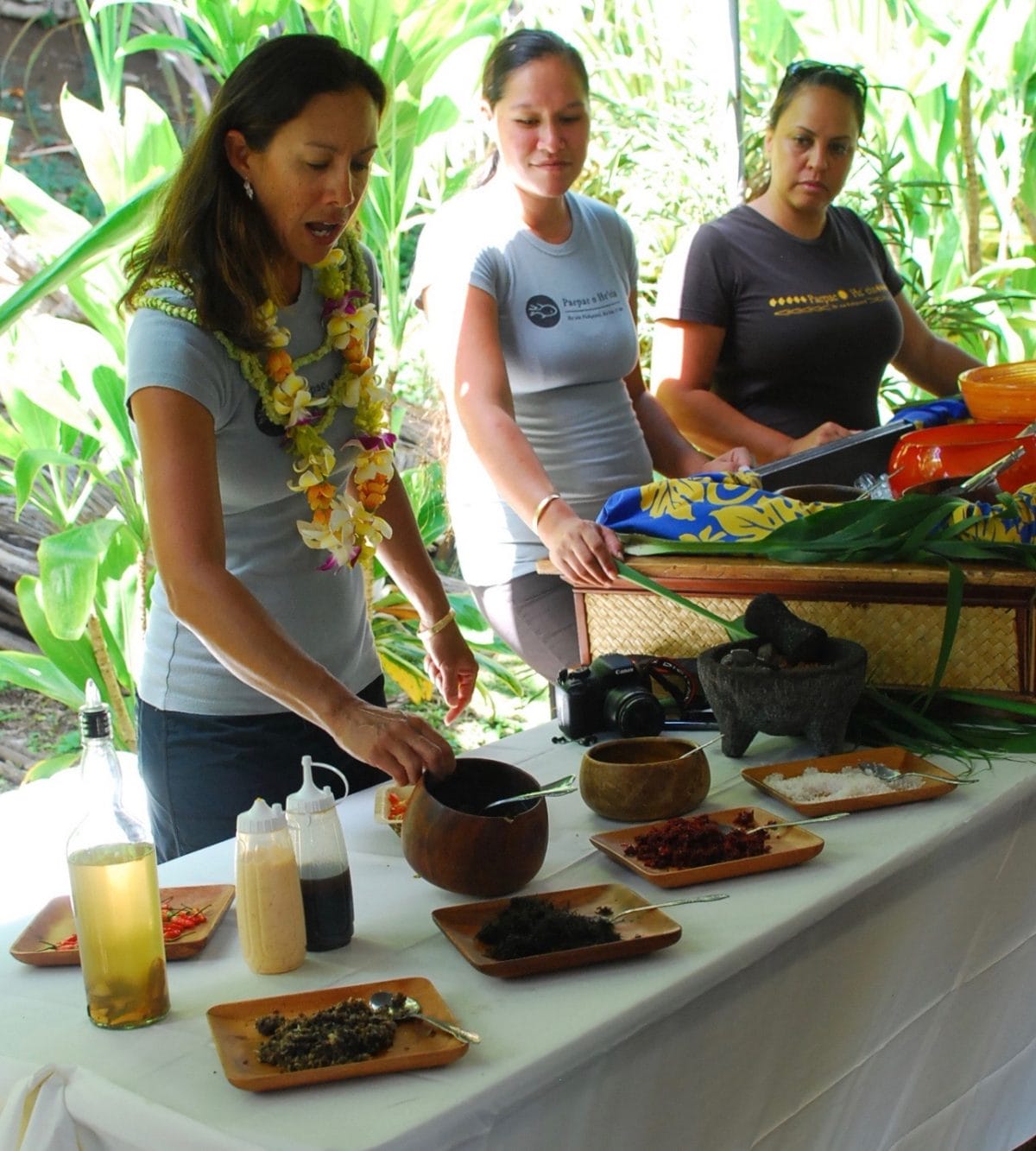
We received mamaki tea, made from light green leaves in the garden, and enjoyed a poke demo, with every ingredient harvested within five miles of the pond, including Kahalu big eye tuna, Kaneohe Bay octopus, and various seaweeds.
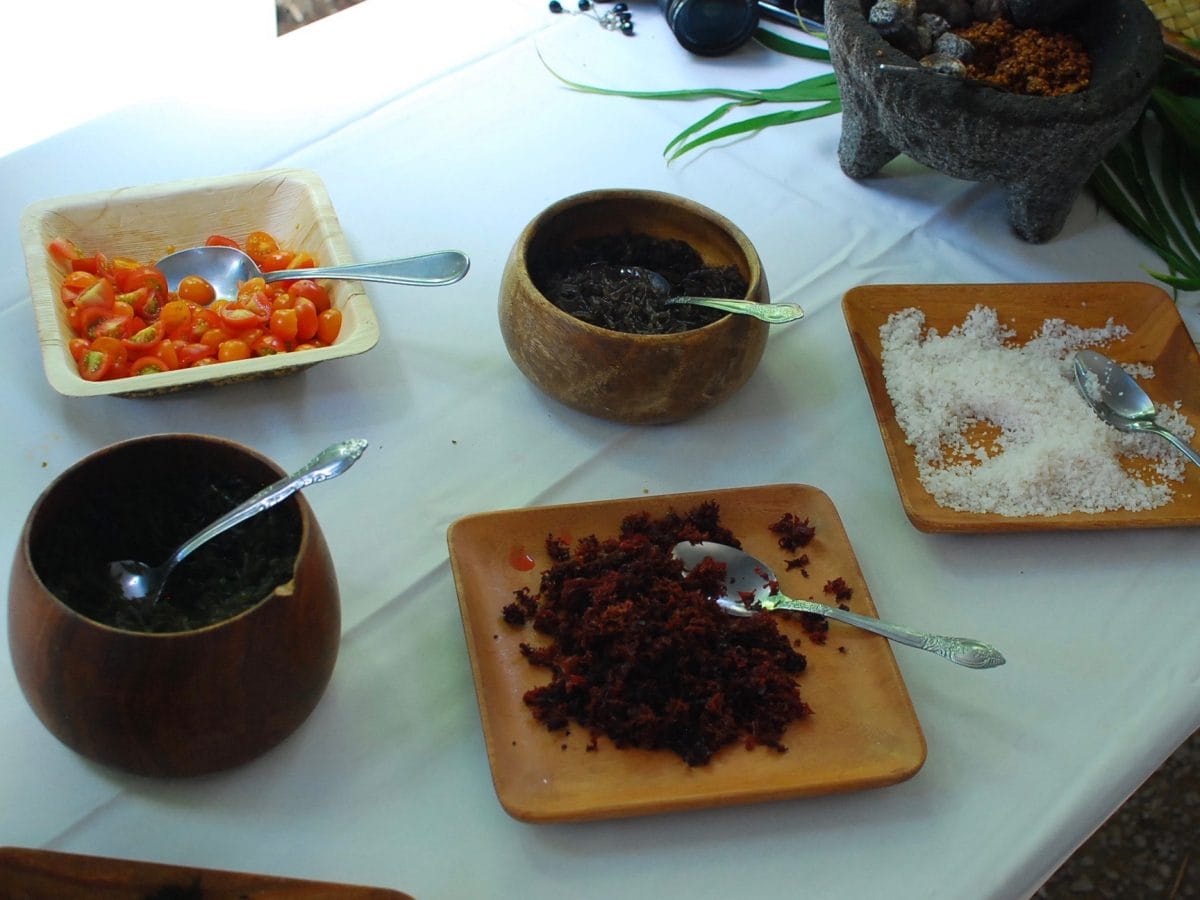
We had our run of the poke bar, including green onion, Maui sweet onion, roasted kukui nut relish, and Kauai Hanopepe salt, which is only available by special barter.
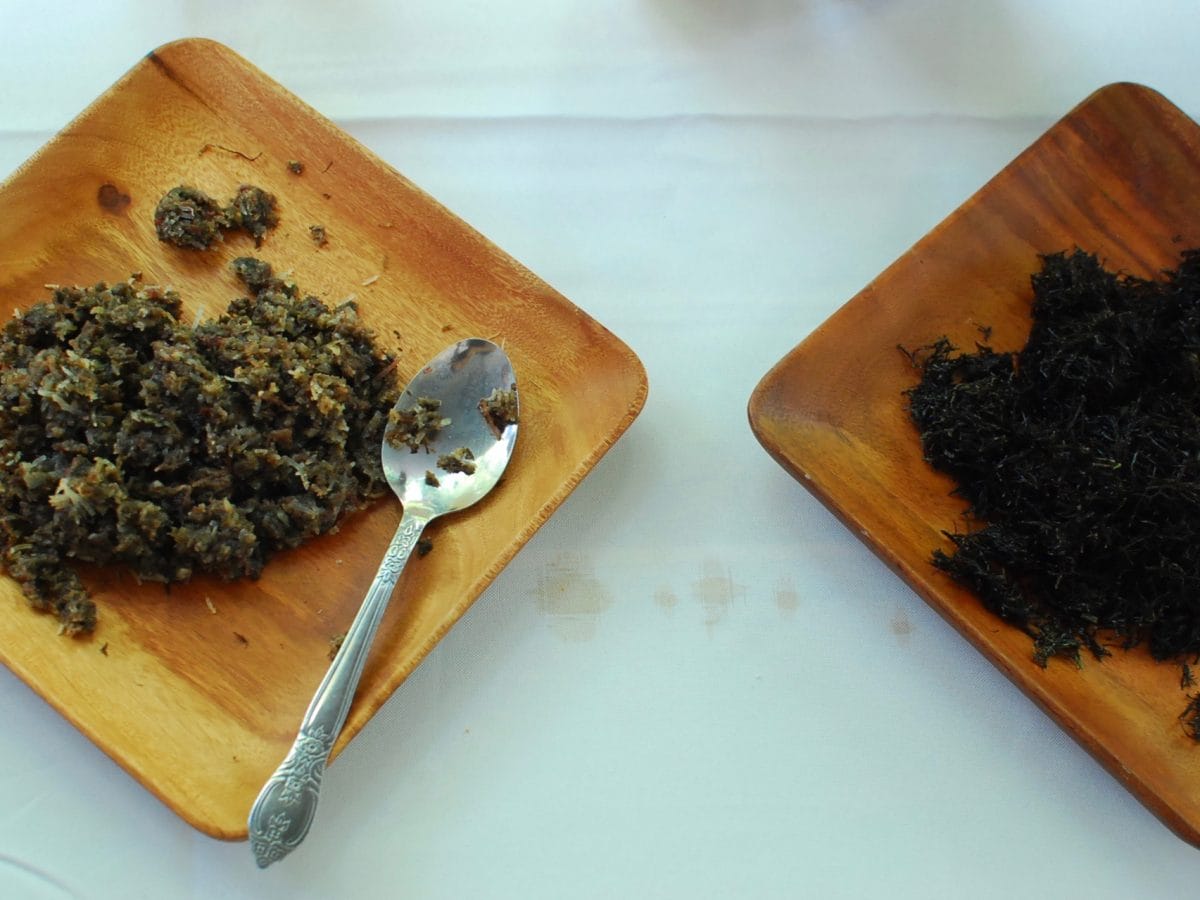
We learned about different seaweeds, including hulu ‘aina, which contributes texture, and limu kohu, which contributes a strong iodine taste.
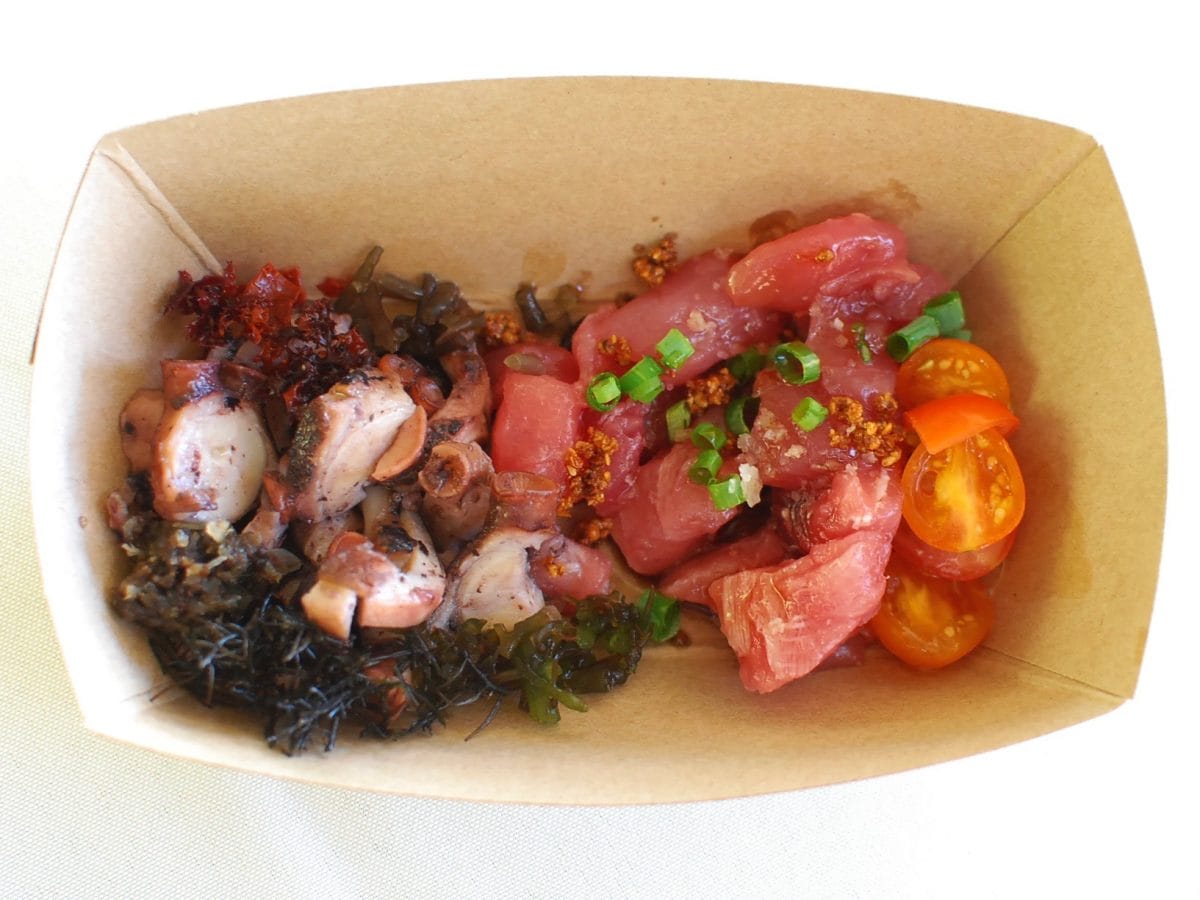
My poke included big eye tuna, octopus, and a selection of different seaweeds, plus chile pepper water and tiny tomatoes.
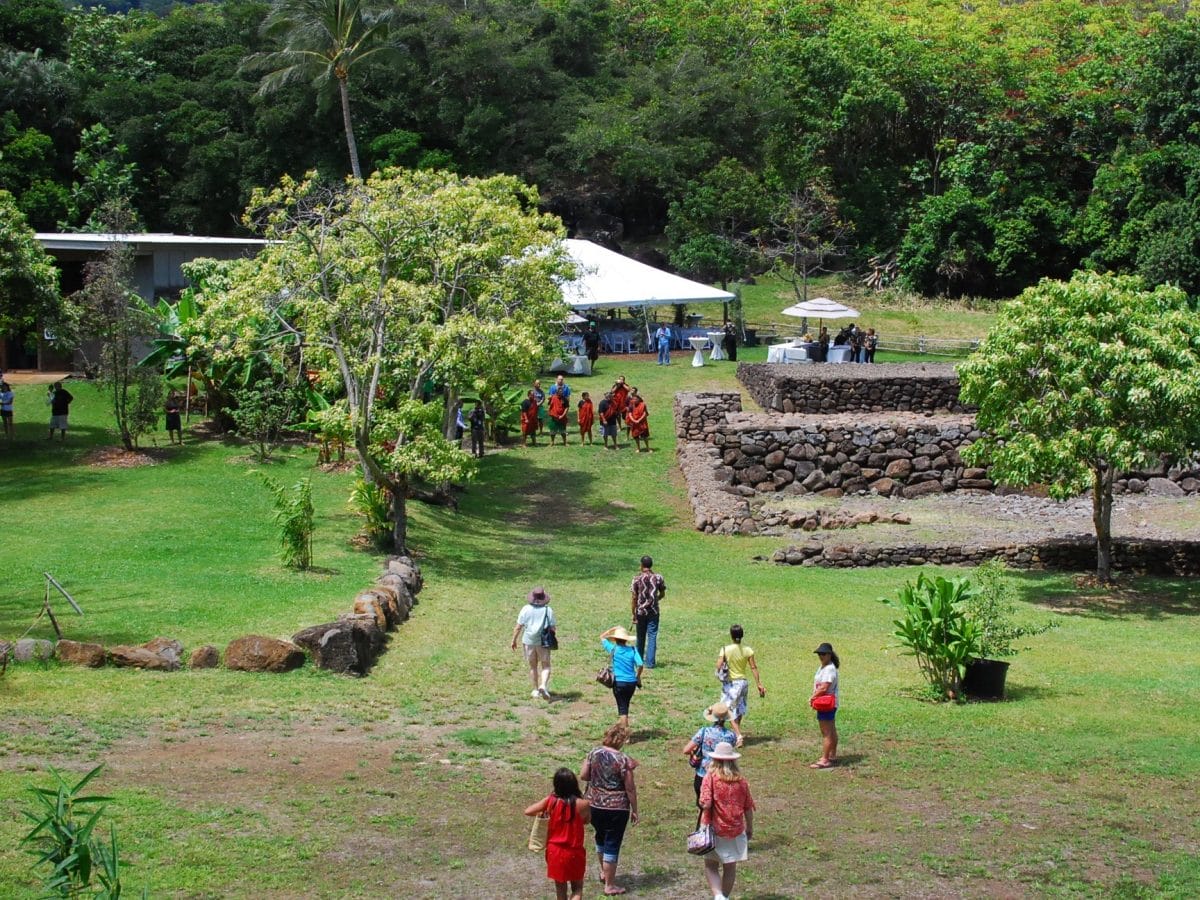
Our tour took us to Papahana Kuaola, where we witnessed a call and response welcome from the gravel parking lot, down to people in burnt orange sashes.

Staffers and volunteers stripped exotic plants and mangrove overrun to build an oasis of stone walls, taro ponds (loi) and a natural spring.
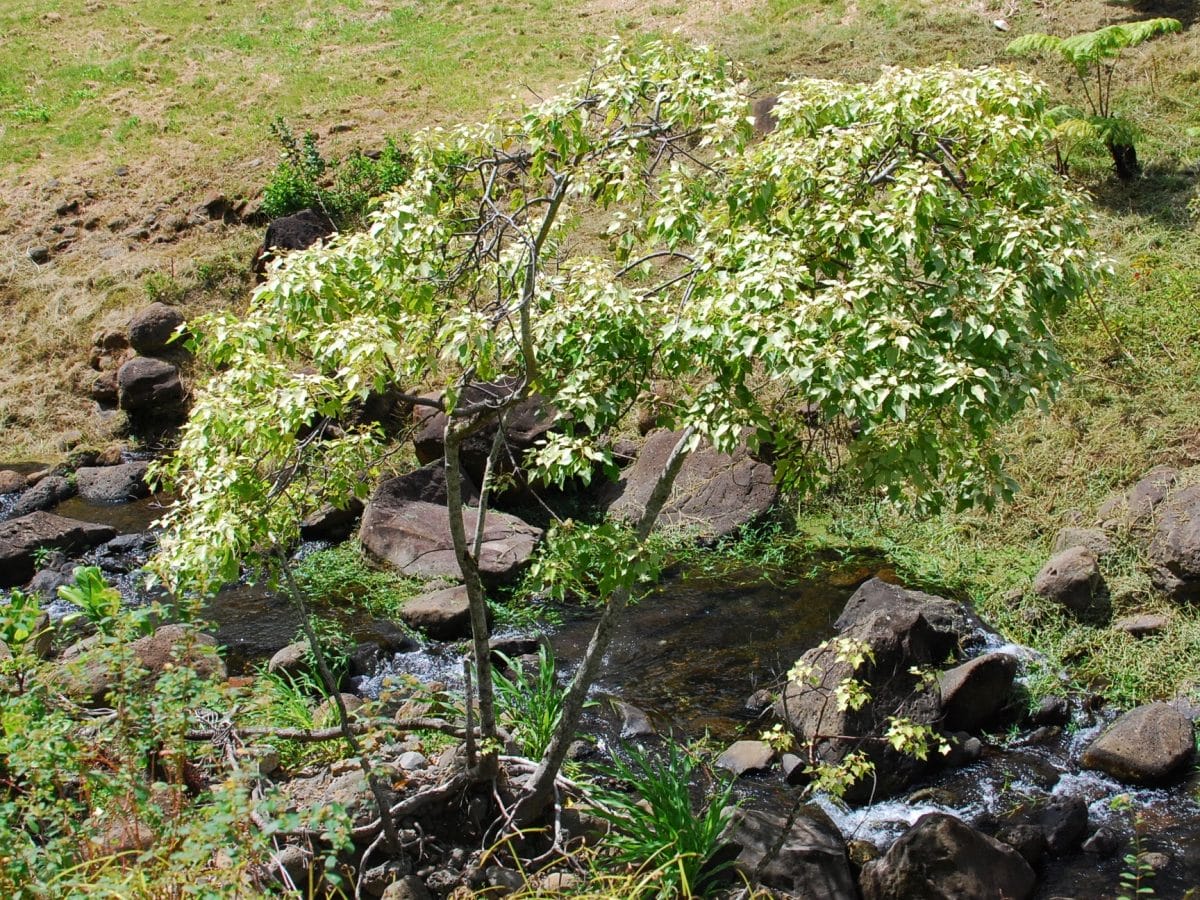
We enjoyed a luau-level feast, minus the kitsch, beside a running stream.
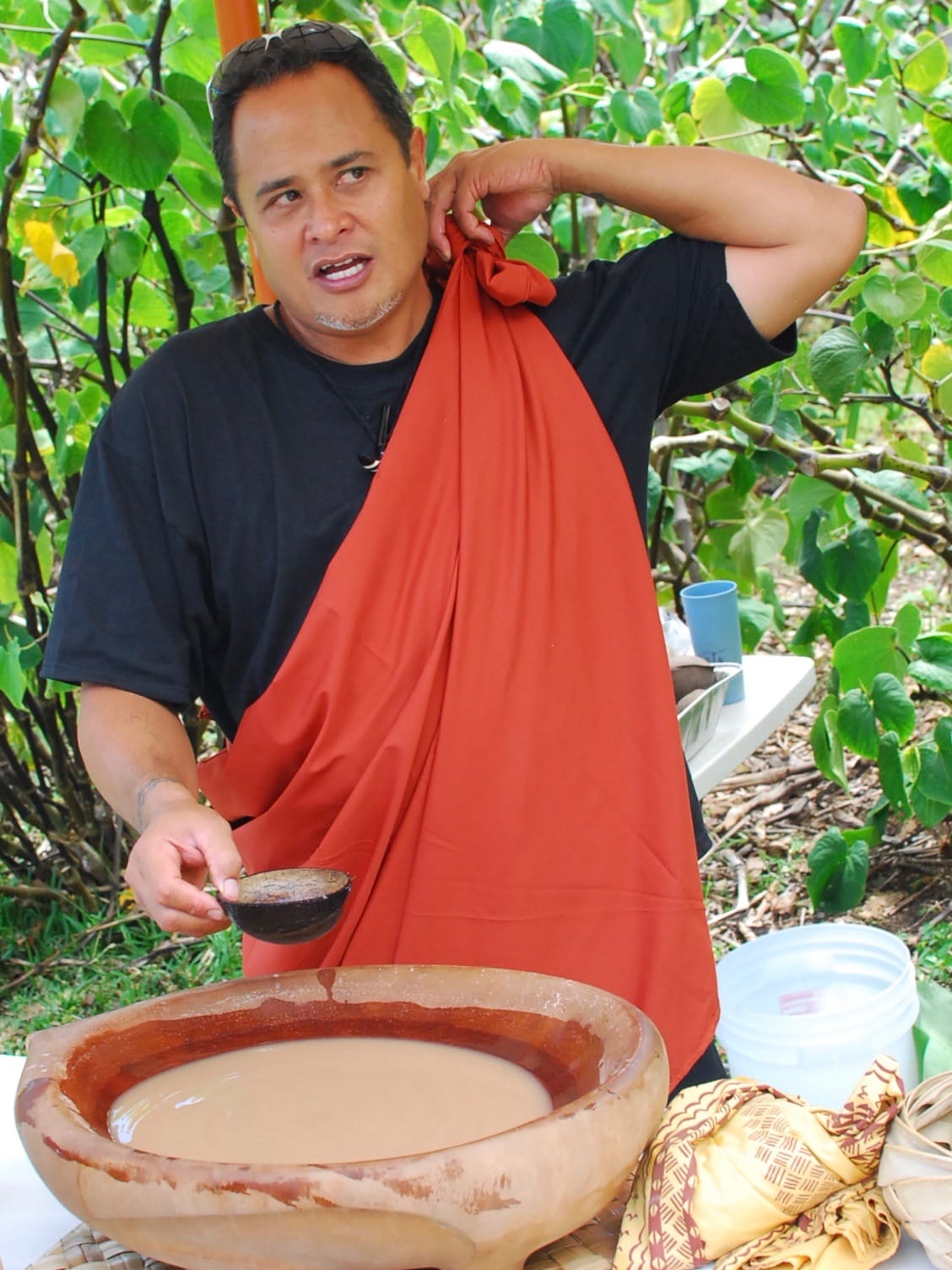
A staffer scooped murky brown awa root drink using a coconut shell. He said it’s “good for the muscles, and it will relax the mind.” Awa is apparently the highest offering you could make to the gods, and it’s extremely bitter.
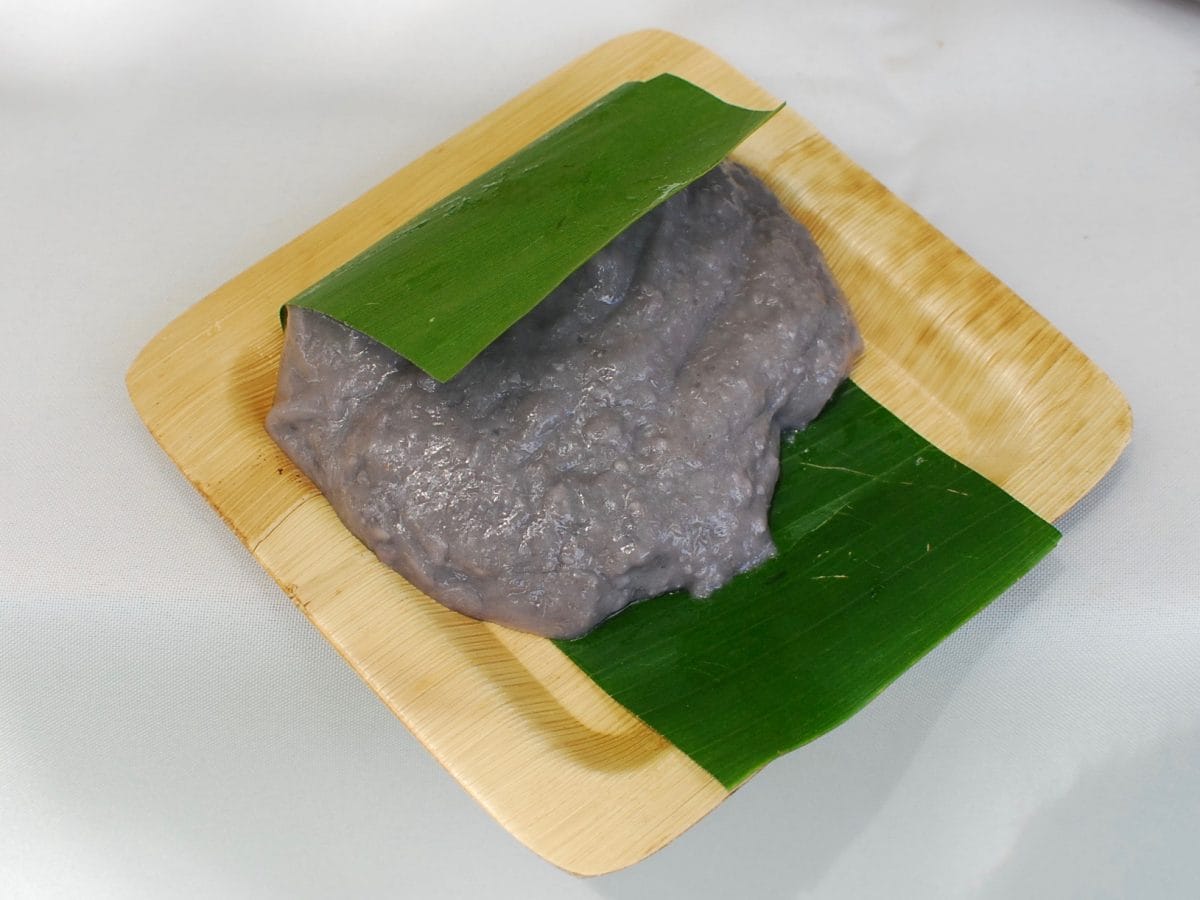
People pounded poi using whole taro, mortar and a giant wood “canoe” until it forms a paste. Incredibly, poi has a shelf life of two years.
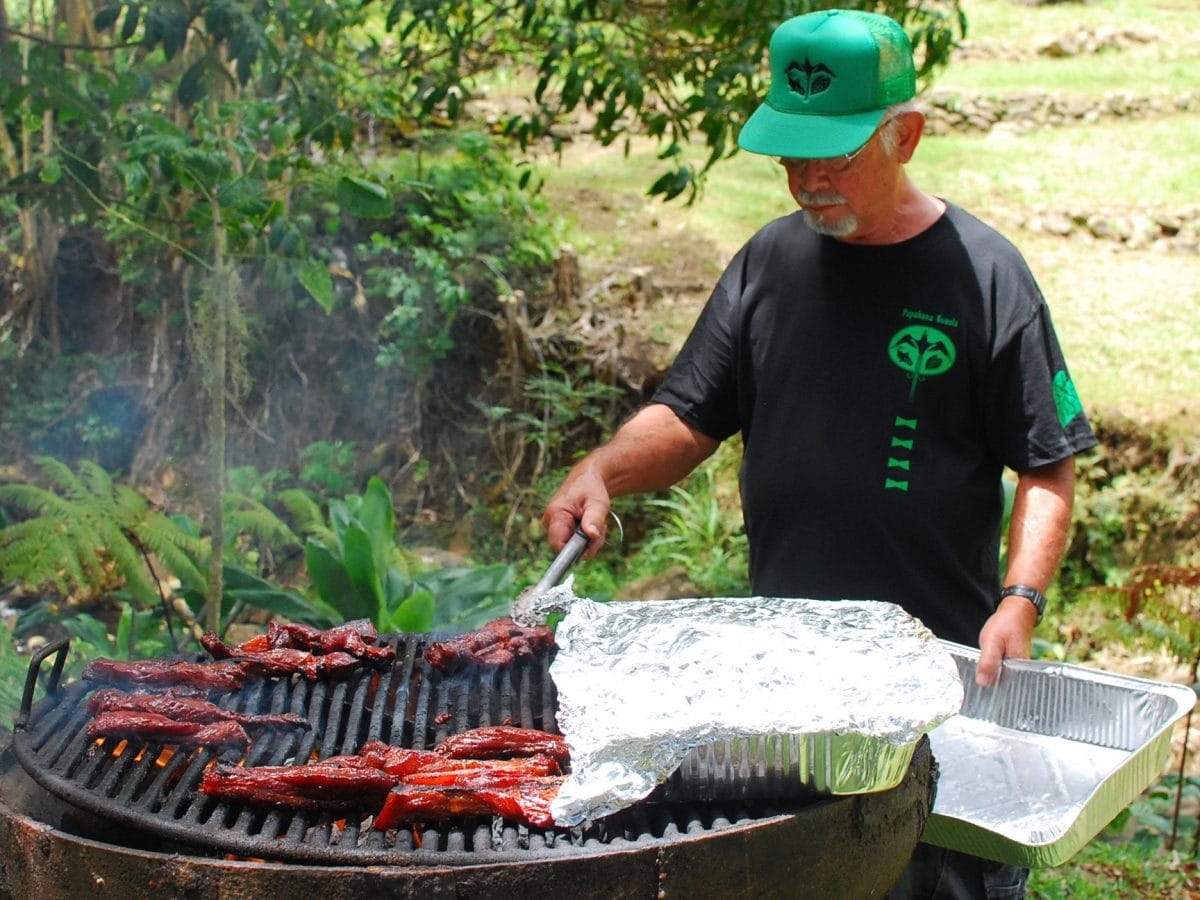
Mike Keahola marinated pork in a sauce with a guava and hoisin base, smoked the meat with lychee wood.
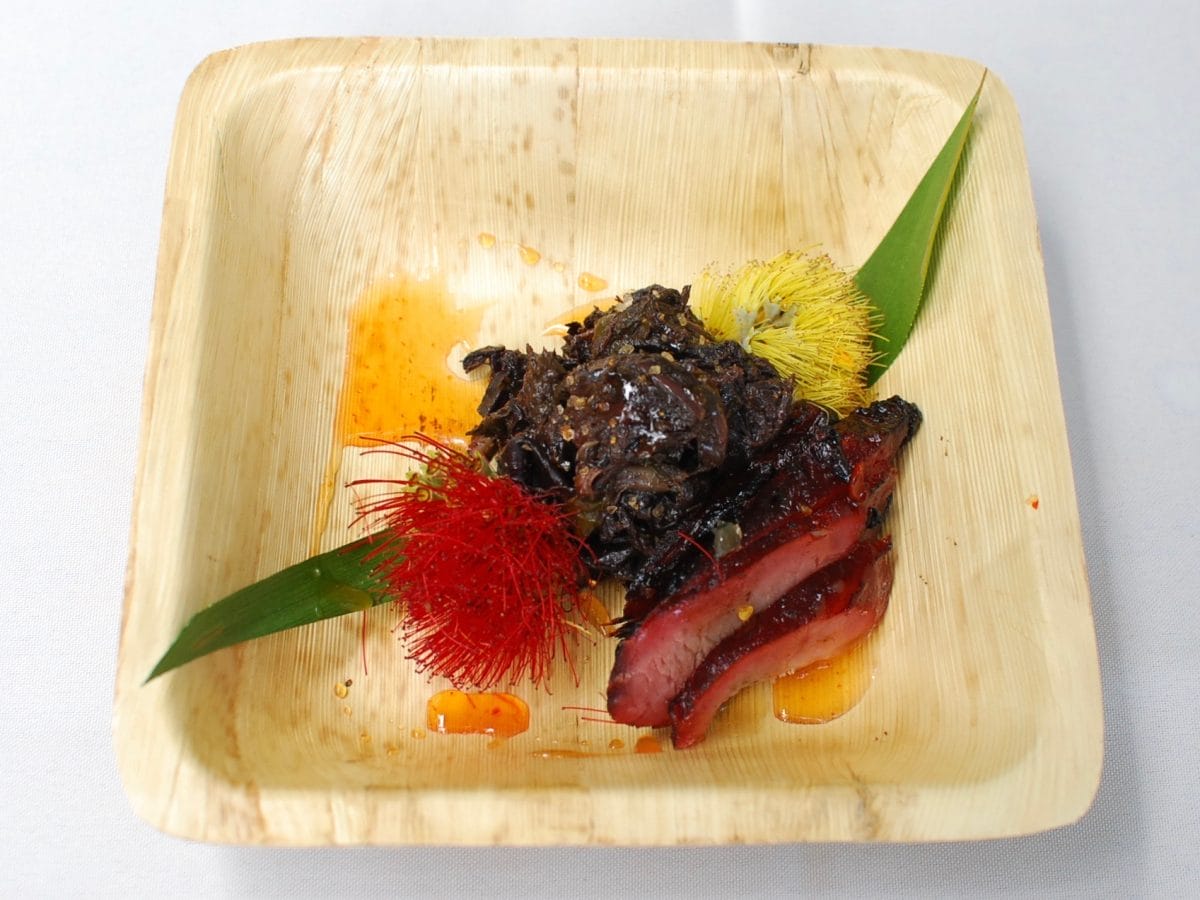
Keahola served the pork with taro leaves and lehua flowers. Lehua is the first tree to rise after volcanoes rain magma on the earth, and they’re normally used in tea, perhaps for good reason.
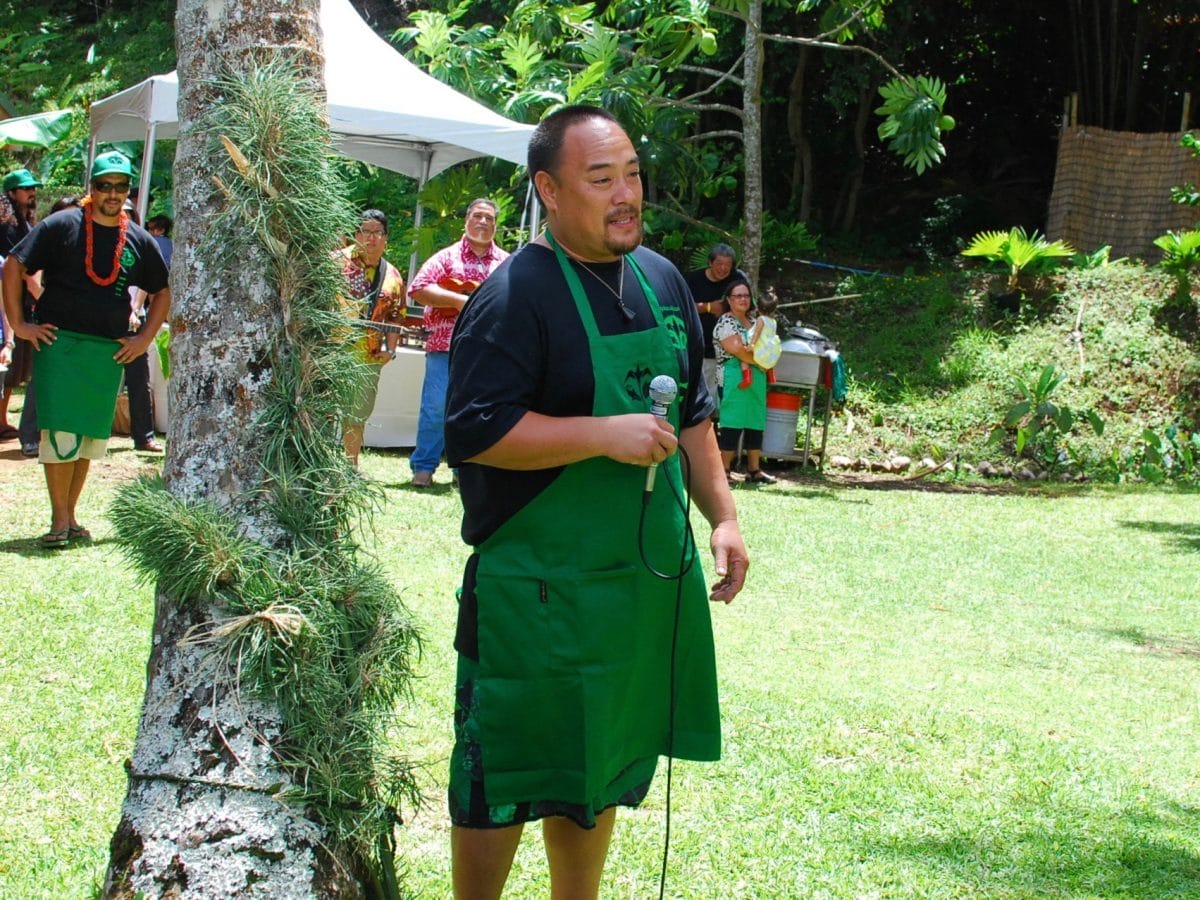
Chef Kealoha Domingo, who prefers the title of “cultural practitioner,” oversaw our lunch.
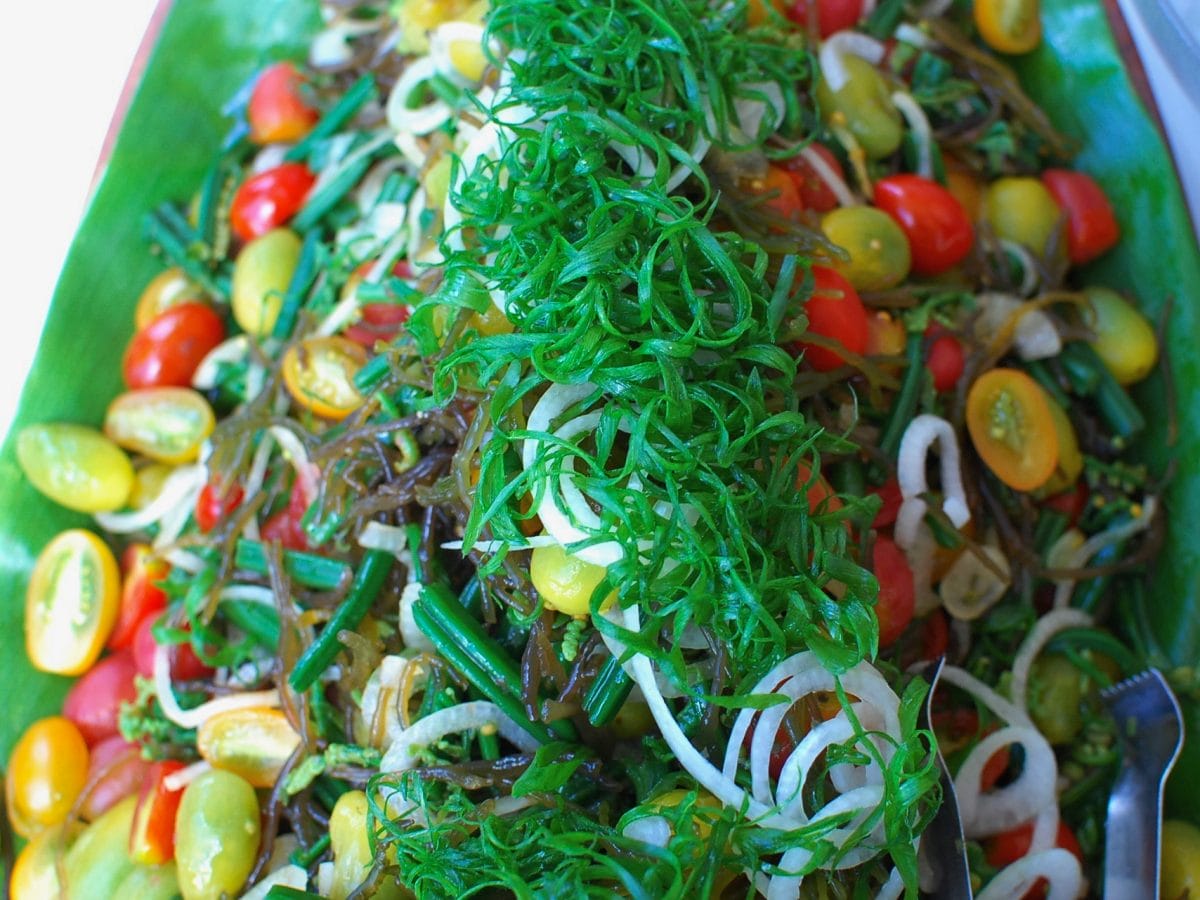
The Lau ‘Ai (salad) table touted He’eia Fern Shoot Salad, including Ko’olaupoko wild fern shoots, limu, locally grown heirloom tomatoes and other local vegetables.
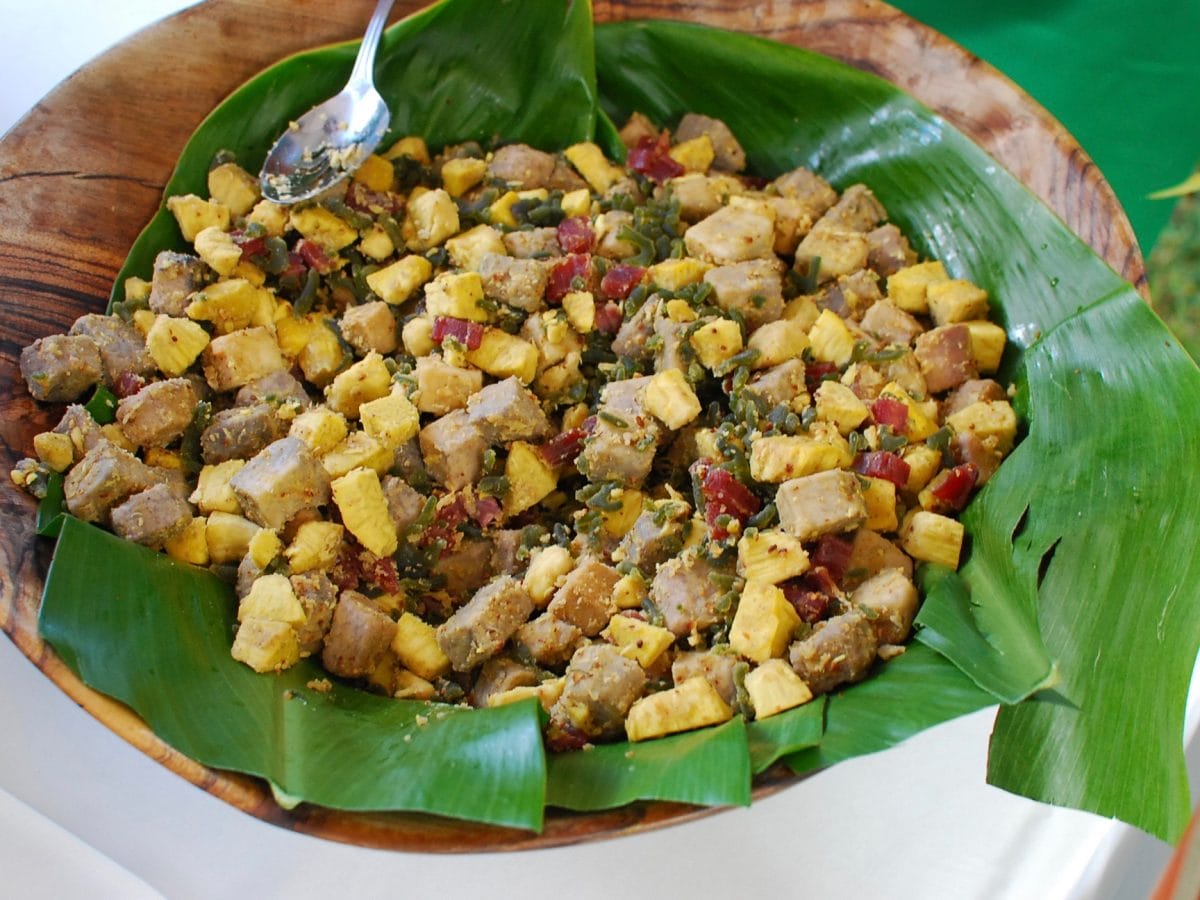
The salad table also supported poke-cut Waipao taro mixed with seasoned ‘ulu and sun-dried ‘ahi.

We received more poke, which wasn’t as good as the version we created ourselves. Is it ever?
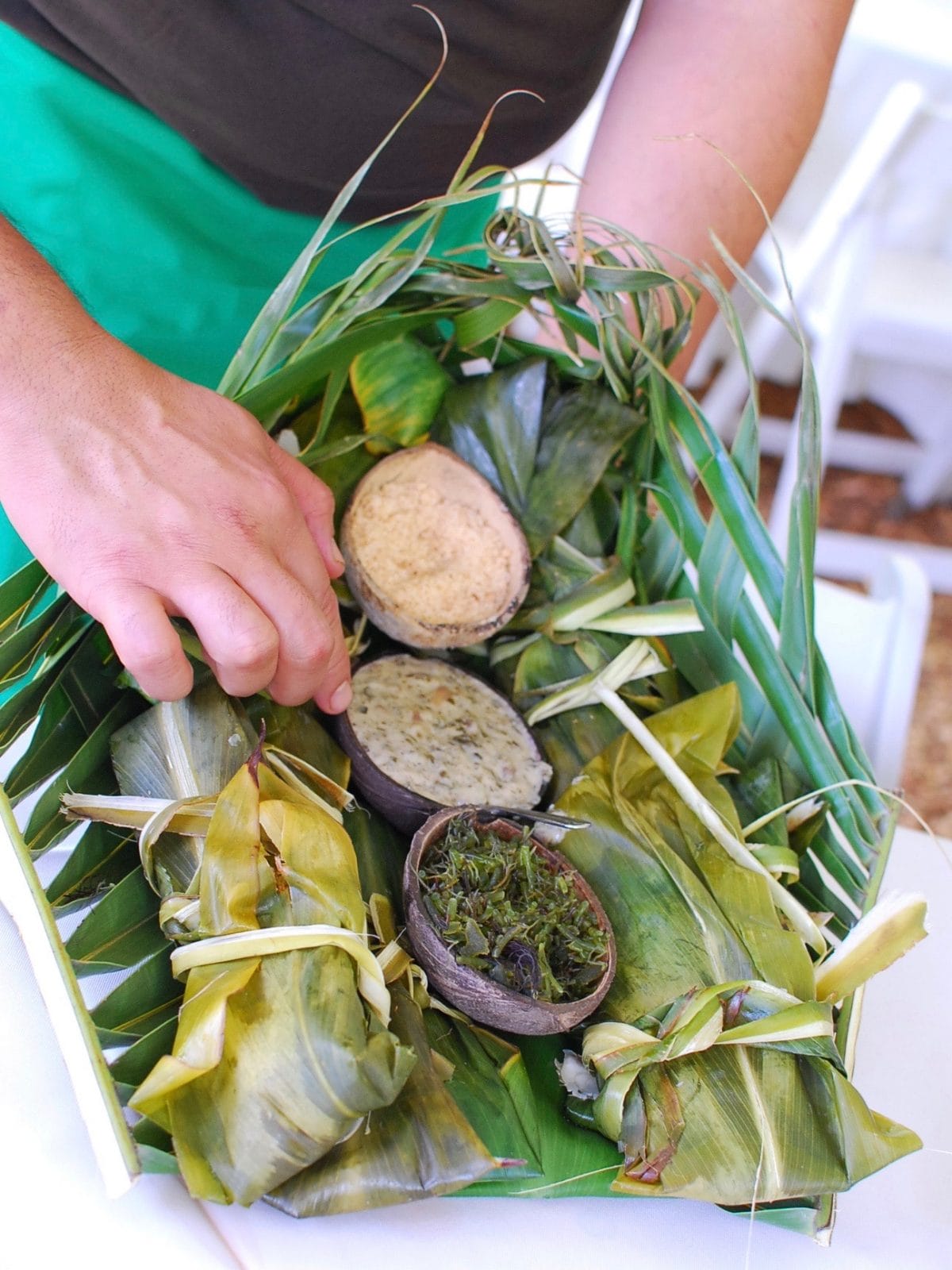
For one of our entrees, we feasted on Moi Iawalu, the Paepae o He’eia moi we cleaned and wrapped in tea leaves. Capable chefs steamed the “fish of kings” in He’eia wai niu (coconut water), sourced on-site, and served with Limu, taro relish and coconut salt.
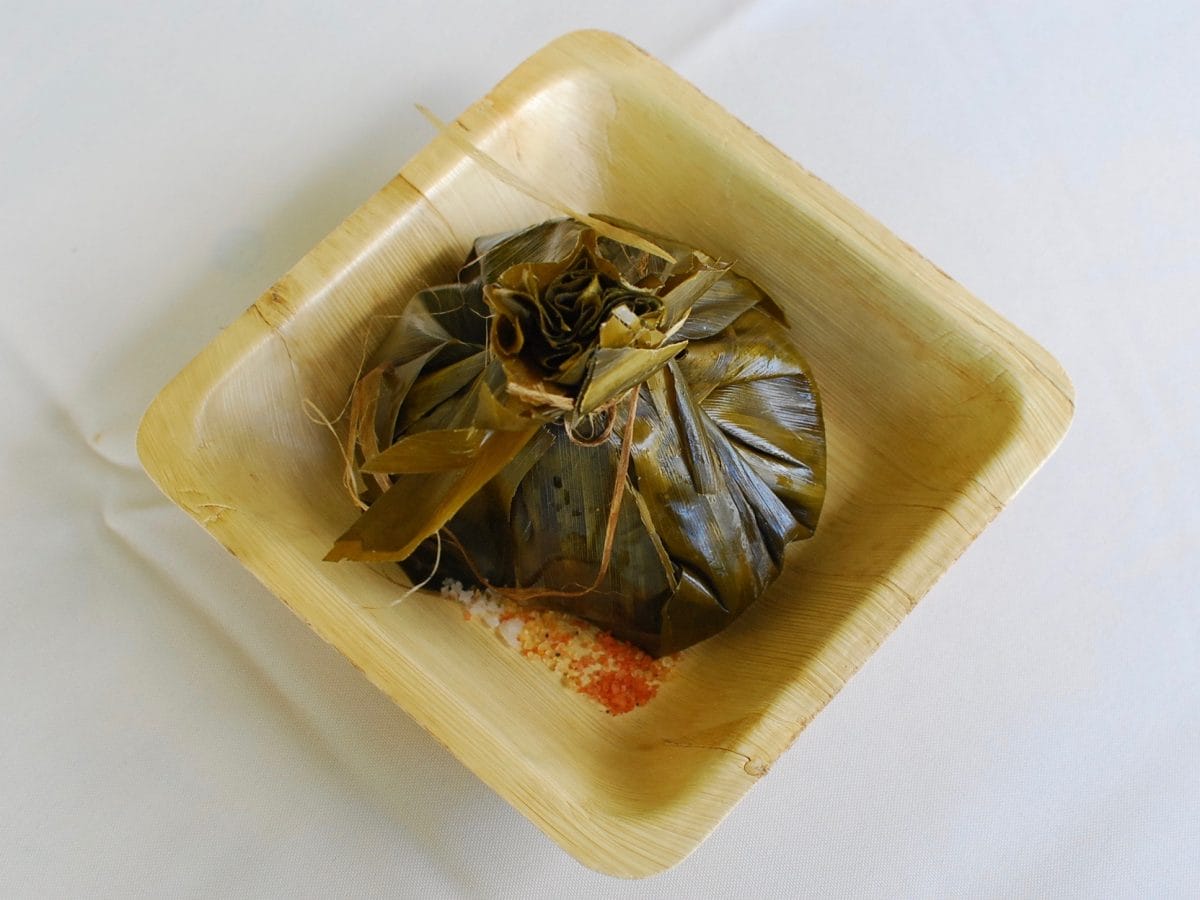
We’re glad Hawaiians are such pork loving people, and they prepared lau lau using Waipao taro leaves and supple steamed Ko’olaupoko pua’a (pig).

Mea ‘Ono (dessert) included a traditional, gelatinous coconut cream pudding called haupia and Mahaka macaroons.
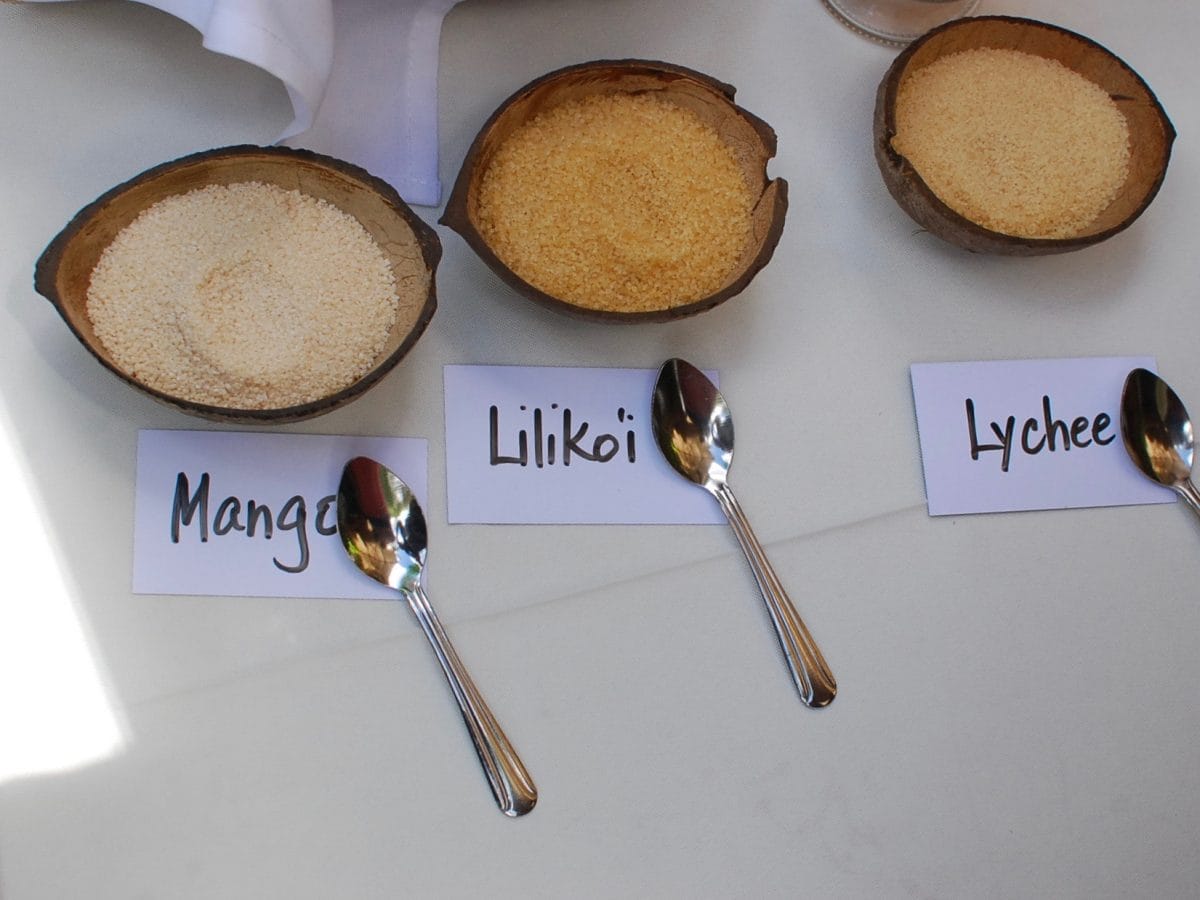
My last taste was of Waiahole Kope, organic coffee prepared using Chemex and served with a selection of flavor-infused sugars: mango, lilikoi and lychee.

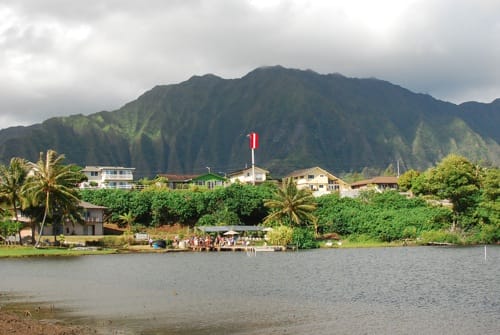

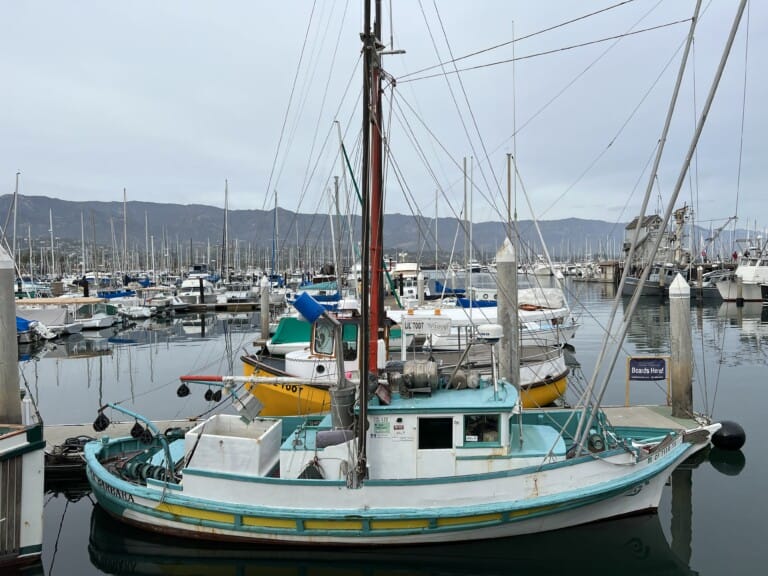





Blog Comments
Top Los Angeles Poke - Food GPS
September 25, 2014 at 4:31 PM
[…] Post »Top Los Angeles PokeBy Joshua Lurie | July 7, 2014 9 comments Hawaii is the pinnacle of poke, where islanders have been known to lavish sliced Kahalu big eye tuna with green onion, Maui sweet […]